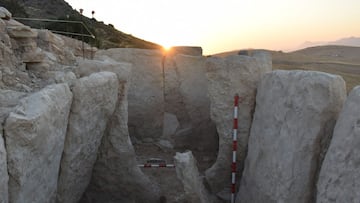A tomb dating back more than 5,000 years has been discovered in Spain: a treasure in exceptional condition
Archaeologists at the University of Cádiz have uncovered “one of the most monumental and best-preserved funerary structures in Andalusia”.

Every so often, archaeology gifts us a window into the distant past - fragments of history that help us better understand the evolution of human civilization. The latest such discovery comes from Teba, a town in the Spanish province of Málaga, where a team from the University of Cádiz (UCA) has uncovered what experts are calling “one of the most monumental and best-preserved funerary structures in Andalusia”.
What exactly was found?
The find, a stone tomb known as a dolmen, is a burial site dating back more than 5,000 years. Inside, archaeologists have identified multiple human remains and a wealth of grave goods, including weapons - an extraordinary glimpse into the funerary customs of prehistoric Iberia. These megalithic stone monuments, while rare, are also found in other parts of Europe, such as France and the United Kingdom.
Measuring 13 meters (about 43 feet) in length, the dolmen is constructed with vertical stone slabs standing over two meters tall (roughly 6.5 feet). Its remarkable state of preservation offers invaluable insights into the burial practices of ancient communities in southern Spain. The excavation has been led by Drs. Eduardo Vijande and Serafín Becerra, members of the Thalassa Research Group at UCA.
El grupo de investigación Thalassa de la UCA ha descubierto en Teba (Málaga) un dolmen de más de 5.000 años, uno de los más monumentales y mejor conservados de Andalucía.@ConoceTeba pic.twitter.com/C7rbJpqym1
— Universidad de Cádiz (@univcadiz) September 22, 2025
“The entire dolmen was also covered by horizontal large stone slabs, and on top of this covering, there was a tumulus [a human-made mound] of sand and small stones,” Dr. Vijande told Live Science. Over the course of four excavation campaigns, the team meticulously documented the tomb, uncovering ossuaries and high-status grave goods crafted from ivory, amber, and seashells, as well as large flint tools and arrowheads.
The seashells were a particularly intriguing find - an unexpected discovery in an inland area. Their presence “reflects the sea’s importance as an element of prestige and the existence of long-range exchange networks,” said Juan Jesús Cantillo, a UCA prehistory professor, in a statement on the university’s website.
Dr. Becerra believes this could be “one of the most monumental and complete dolmens in all of Andalusia”. For his part, Dr. Vijande emphasizes the site’s exceptional preservation, which allows researchers to delve deeply into “the lifestyles and belief systems of these ancient communities”.
Related stories
Get your game on! Whether you’re into NFL touchdowns, NBA buzzer-beaters, world-class soccer goals, or MLB home runs, our app has it all.
Dive into live coverage, expert insights, breaking news, exclusive videos, and more – plus, stay updated on the latest in current affairs and entertainment. Download now for all-access coverage, right at your fingertips – anytime, anywhere.


Complete your personal details to comment